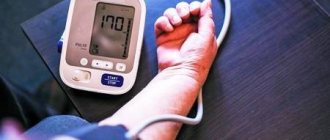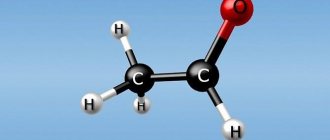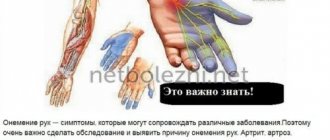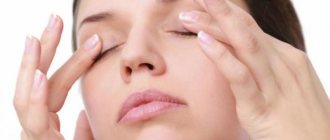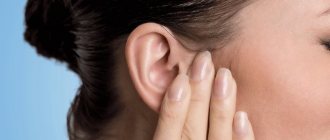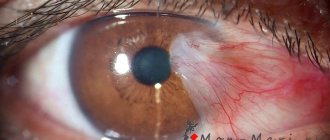VSD is a common set of symptoms that in our time has affected not only adults, but also children. There are many causes for this disease, and therefore each clinical case has its own individual characteristics and many approaches to treatment. A common symptom – surges in blood pressure – also cannot be called constant and unambiguous. Pressure during VSD can either increase or decrease, leaving the diagnosis legitimate. With this disease, it is important to understand that “blood pressure instability” is a symptom that disarms the patient in the face of many life-threatening situations.
Over many years of observing, diagnosing and treating patients, specialists at the Yusupov Hospital have proven their ability to help patients solve their problems, improve their quality of life, and move from “tolerate” to “overcome.” Doctors at the Yusupov Hospital will help determine possible causes and select medications that will help a specific patient and in a specific clinical situation.
High blood pressure - causes and symptoms
An increase in blood pressure is most often a reaction of the human body to an irritant (stress, hormonal changes, climate change, etc.). The body, in turn, compensatoryly increases the heart rate, causing the heart to work harder and with greater force. But the opposite situation also happens - when high blood pressure is accompanied by a low heart rate. The reason for this is impaired regulation of the cardiovascular system. With low heart rate and high blood pressure, the brain and heart are primarily affected. Disruption of the blood supply to these organs can threaten the patient's life, so he needs immediate examination and treatment.
Over time, pressure surges become more and more common. This affects a person’s well-being. Symptoms that may bother the patient:
- increased heart rate;
- dizziness;
- headaches of different localization;
- chills or fever;
- short-term visual impairment (“spots”).
These symptoms make a person forget about everything and concentrate only on how he feels, thereby aggravating the situation. When measured with a tonometer, the increase in blood pressure can reach extremely high numbers. At the same time, the headache intensifies, the heartbeat quickens, and the fear of death appears. Despite such poor health, these pressure surges do not carry with them serious consequences. In no more than two hours, the crisis will end with increased urination.
In this case, it is very important to differentiate high blood pressure from a hypertensive crisis, which is dangerous to the health and life of the patient and requires urgent therapeutic measures.
How to eliminate pressure surges during VSD?
To normalize blood pressure, complex treatment based on psychotherapeutic correction, medications and herbal medicine will be required.
How to eliminate pressure surges during VSD
Treatment with medications is aimed at eliminating the symptoms of VSD and normalizing blood pressure. The specialist prescribes sedatives based on medicinal herbs (valerian, motherwort, St. John's wort). In the presence of high blood pressure, drugs are prescribed to improve cerebral circulation (glycine, vinpocetine). To lower blood pressure, it is recommended to take antidepressants and tranquilizers, which will be prescribed by a psychotherapist on an individual basis. Herbal medicine is highly effective in the treatment of vegetative-vascular dystonia. The increased pressure returns to normal and the operation of the autonomous system is improved.
For treatment, a decoction of valerian, motherwort, lemon balm, mint, and chamomile is recommended. At low blood pressure, you should brew rose hips, nettles, calendula, and string. Each type of herb should be brewed separately and taken for 14 days. Psychotherapeutic treatment methods are necessary for people who suffer from vegetative-vascular dystonia. Especially if pressure surges occur against the background of psychosomatic disorders, fears, and depression. A psychotherapist will determine the true cause of the disease and help cope with panic attacks due to VSD. The patient learns to relax his body using effective relaxation techniques.
To eliminate unfavorable symptoms, you will need to reconsider your lifestyle and change it for the better.
Low blood pressure - causes and symptoms
Low blood pressure is also a complication of VSD, causing no less trouble for patients. The patient's body reacts to irritating factors by dilating peripheral vessels, and inhibition dominates in the central nervous system. Patients justify low blood pressure for themselves with all sorts of secondary reasons, without noticing other symptoms.
The most common symptoms of low blood pressure are:
- excessive weakness;
- pathological fatigue;
- increased drowsiness, light sleep itself, frequent nightmares;
- dizziness to the point of fainting;
- impairment of cognitive functions (memory, attention, concentration).
About vegetative-vascular dystonia
Vegetovascular dystonia (in other words, autonomic dysfunction) is a disorder of the autonomic nervous system.
The autonomic nervous system is part of the nervous system that regulates many processes in the internal organs. It is sometimes called the autonomic nervous system because... regulation occurs autonomously, i.e. without the participation of human consciousness. The autonomic nervous system conventionally has two divisions: sympathetic and parasympathetic, which are responsible for oppositely directed actions: for example, the parasympathetic division stimulates digestion, and the sympathetic one slows it down. Normally, the parasympathetic and sympathetic systems are in balance without predominance of one over the other.
Vegetovascular dystonia is an imbalance in the autonomic nervous system, the consequence of which is disruption of the functioning of internal organs. Vegetative-vascular dystonia affects up to 70% of the adult population and 15-25% of children.
Treatment of manifestations of VSD in Moscow
Due to the fact that VSD brings a lot of discomfort to the patient’s life, most begin to self-medicate. Pressure surges are so unstable and inconsistent that patients take several drugs from different groups that block each other’s action.
Treatment of VSD should begin only when the organic nature of the symptoms is excluded, because many diseases of the cardiovascular and endocrine systems, allergies, focal infections, etc. have a similar clinical picture.
VSD therapy is complex:
- lifestyle modification: proper nutrition, daily routine, stress management (possibly consulting a psychologist);
- attracting specialists from various fields (gastroenterologists, endocrinologists, cardiologists, neurologists, etc.);
- drug treatment aimed at relieving autonomic disorders of VSD (Concor, Paxil, Teraligen);
- physiotherapeutic methods of treatment.
Due to constant anxiety, fear of attacks, drowsiness and disturbed sleep, patients cannot cope with this on their own. The prescribed drug "Paxil" successfully copes with its task - sleep improves, patients get rid of panic attacks, and anxiety goes away. An important feature of Paxil is its ability not to affect blood pressure, which allows it to be used in patients with both hyper- and hypotension.
For mild disorders, if treatment was started in a timely manner, Teraligen performed excellently. It has a mild sedative effect and begins to act almost immediately after administration. It is also important that the drug potentiates the effect of other drugs, so it has to be taken in small dosages, and patients really like this.
For patients with the hypertensive type of VSD, our specialists successfully prescribed the drug Concor, which blocks signals that stimulate the heart, to patients at the Yusupov Hospital.
Concor for VSD reduces the heart rate, normalizes heart rhythm, helping to reduce the heart's need for oxygen. Concor for VSD helps to reduce activity in the sympathetic department of the autonomic nervous system and acts directly on the heart muscle. Concor is a drug that has proven itself to normalize heart contractions in the presence of VSD. The dose of the drug is selected and adjusted only by the doctor.
Patients of the Yusupov Hospital note a quick and long-lasting effect, and if the dosage prescribed by our specialists was followed, no side effects were observed.
“Anaprilin” has also proven itself well for the treatment of VSD. Although this drug is non-selective and acts not only on cardiac receptors, it is the drug of choice when an immediate effect is needed. By reducing the strength and frequency of heart contractions and blocking the action of hormones, it reduces the heart's need for oxygen. Under the influence of anaprilin, blood pressure decreases during VSD. Patients note the advantage of Anaprilin for VSD in that it works quickly, and this is a priority.
Paying attention to the mechanism of increased pressure during VSD, it would be logical to talk about “Enap” in this article. The drug prevents the narrowing of the arteries, preventing the development of hypertension and preventing an increase in pressure during stress or the action of a reflex mechanism. This drug has shown a good effect in patients with frequent panic attacks, since under the influence of the drug the receptors become immune to adrenaline, which makes it possible to break the vicious circle and cope with the symptoms of VSD.
What leads to disruption of the autonomic nervous system?
A confirmed diagnosis of vegetative-vascular dystonia indicates a malfunction of the nervous system with autonomic manifestations.
The functioning of the ANS is disrupted by the following factors:
- hereditary predisposition of the body;
- presence of psychosomatic and neurological diseases;
- disruptions in the functioning of the endocrine system;
- hormonal imbalance;
- characteristics of the mental state (isolation, low self-esteem, constant worries for no specific reason);
- brain injuries;
- allergic reactions;
- alcohol abuse;
- prolonged depression or chronic stress;
- neurosis of varying severity.
Treatment of manifestations of VSD in Moscow
Medicine has always developed dynamically, and at the moment there is a whole host of effective treatment methods. The specialists of the Yusupov Hospital, using their accumulated knowledge and skills, never cease to absorb new knowledge. There is no panacea for all diseases, but this is not a reason to be alone with your problems. The clinic’s doctors find an individual approach, select the treatment necessary in a particular case, provide comfortable conditions, and help where your body could not cope. Don’t put up with the symptoms - make an appointment by calling the Yusupov Hospital.
Causes
Hyperventilation
The main physiological cause of low blood pressure in VSD and other neurotic disorders is hyperventilation.
When a person is in an anxious or depressed state, the breathing rhythm changes. Moreover, a person may force breathing intentionally, or may not even notice it. As well as not noticing that he is worried or sad. The state of anxiety and/or despondency may become so habitual that it begins to be perceived as normal.
However, even background anxiety changes the breathing rhythm. The amount of oxygen in the blood increases and the concentration of carbon dioxide decreases. This leads to the expansion of blood vessels and, as a consequence of this expansion, to a drop in pressure.
Against the background of low pressure, the heart begins to beat faster. A high heart rate is normal for this condition. In addition to tachycardia, a person begins to feel:
- weakness and dizziness;
- chest pain;
- difficulty breathing;
- muscle pain, especially in the back;
- nausea, etc.
All these symptoms frighten the patient with VSD so much that his anxiety level rises sharply. As a result, hyperventilation increases. At this moment, many neurotics say that they are in a pre-fainting state. But in fact, in most cases, it is not fainting that occurs, but a panic attack.
Panic causes the release of adrenaline into the blood. Under its influence, the vessels narrow and the pressure rises. The man measures it and sees what has risen. He begins to calm down and relax. Adrenaline gradually goes away. The pressure drops again.
Here we could rejoice. But many people who believe that they are seriously ill with something, for example, VSD, act differently. They get scared again.
And they begin to ask in horror what to do if the pressure fluctuates throughout the day - sometimes low, sometimes high. Nothing to do. Relax. Nothing is going anywhere. Blood pressure reflects the emotional state you are in. These are your emotions. And the pressure just serves them.
Other possible reasons
- Hyperventilation is considered the main reason why anxious people's blood pressure drops. However, there are other possible explanations for this process, which are also associated with the emotions of the hypotensive person.
- Thus, there is a possible connection between neuropeptide Y and other neuropeptides and a decrease in blood pressure due to depression/anxiety. The stress hormone cortisol may also play a role in lowering blood pressure.
- In some anxious individuals, symptoms of hypotension may develop due to dehydration. With chronic anxiety, increased urination and sweating often occur. This may contribute to a drop in blood pressure, especially during physical activity and/or hot weather.
- Sometimes blood pressure can drop due to a slight decrease in sugar levels that occurs due to nervousness.
Fixation of attention
In fact, it is the fixation of attention on one’s well-being, and not hyperventilation or hormonal activity, that is the main cause of low blood pressure in neurotic patients - those who suffer from VSD, are depressed, and are constantly anxious.
Attentive local therapists know that there are two groups of hypotensive patients.
- One includes mentally stable people, usually young women (who are characterized by low blood pressure, which does not pose any threat to health). They are not fixated on how they feel. They don't measure blood pressure. They do not scrupulously monitor changes in the functioning of their body. They learn that they are hypotensive by accident during a medical examination and then do not take it into their heads. They are not interested in measuring their pulse and blood pressure. They have more tempting things to do in life.
- The second group consists of hypotensive-neurotics. Some of them have a diagnosis of VSD, some do not, but the essence does not change. All these people have obsessive thoughts about health and the functioning of their body. They constantly monitor how their heart beats and how their stomach growls. It is these patients who consider themselves hypotensive, whose blood pressure fluctuates throughout the day, and who need medical attention.
But for all people, blood pressure increases during the day. Even among strong athletes. This is the norm. The problem of most hypotensive patients is not a drop in pressure and its subsequent rise, but the fact that a young healthy person, who has been told by doctors more than once that everything is fine, in principle wants to measure his pressure. I want to sit at home, hugging a blood pressure monitor, instead of riding a bike.
How to get rid of it?
You can get rid of hypotension due to VSD, depression and any other neurotic disorders, no matter what they are called, by treating the disorder itself. To do this, you need to seek help from a professional psychotherapist or clinical psychologist. If this is not possible, you need to work with your mental problems yourself. Fortunately, today there is a lot of useful information freely available on how to do this correctly.
And the first step you should take to eliminate the symptoms of low blood pressure is to stop thinking about it. Put the tonometer away. Stop tracking surges and changes in heart rate and blood pressure throughout the day. In general, get rid of your body and its physiological reactions.
We use treatment methods such as:
- Manual therapy;
- Osteopathy - treatment by the hands of a doctor, a gentle effect on the musculoskeletal system, nervous and vascular systems, internal organs;
- Medical massage;
- Acupuncture - exposure to biologically active points with microneedles;
- Laser reflexology is a painless effect on reflexogenic zones and points;
- Tsubotherapy is a gentle effect on the body’s reflex points;
- Pharmacopuncture - the introduction of medicinal drugs of natural origin to the source of the problem;
- Plasma therapy is the introduction of the patient’s own purified blood into the site of the disease;
- Isometric kinesiotherapy - individual gymnastic techniques/exercises, according to indications, with elements of joint massage;
- Kinesiotherapy using the Exart installation;
- Kinesio taping;
- Ozone therapy - treatment with active oxygen;
- Physiotherapy;
- Physiotherapy with enzyme preparations;
- Therapeutic droppers;
- Hirudotherapy - treatment with leeches;
- Botulinum therapy is treatment with botulinum toxin preparations.
